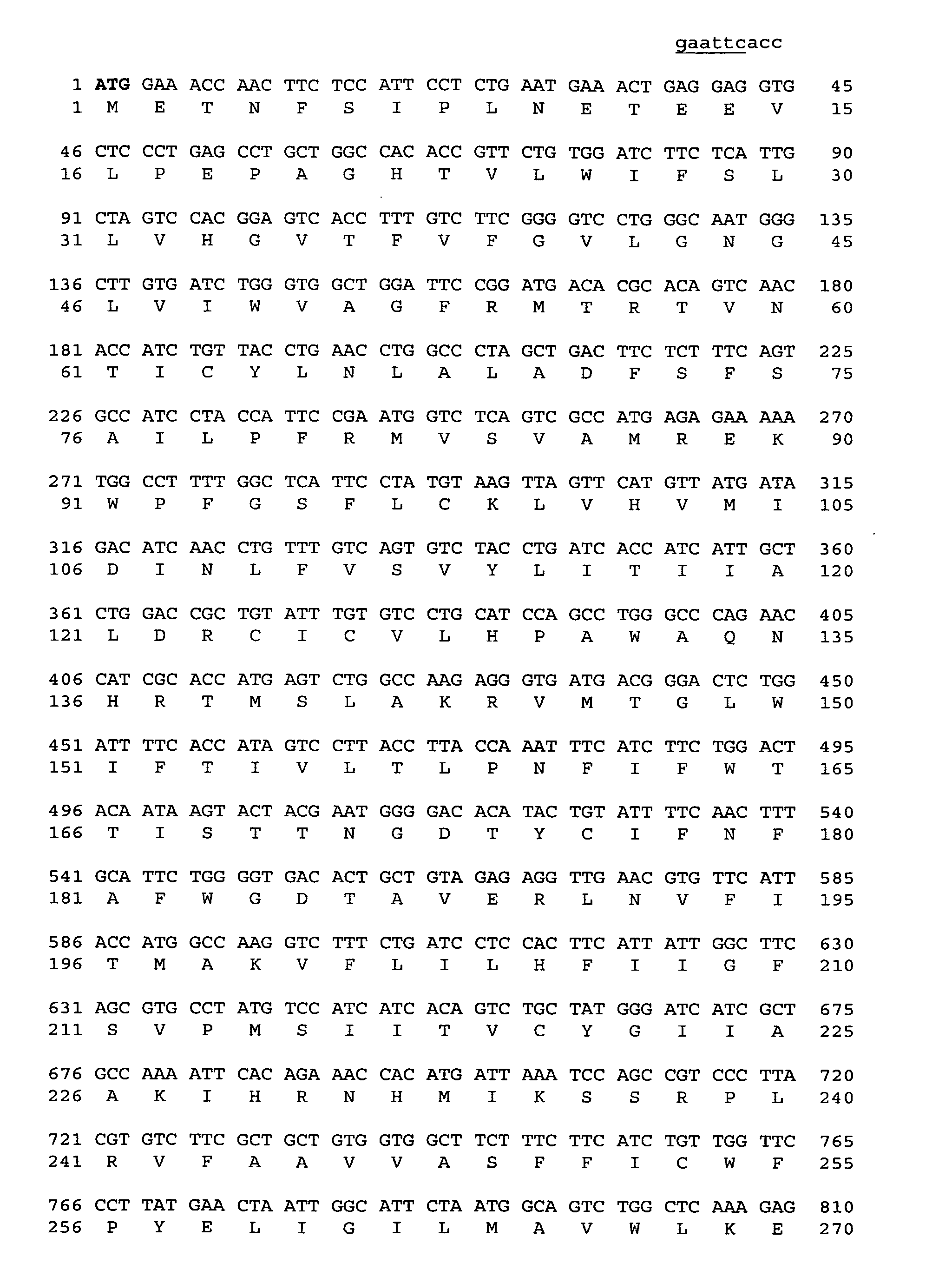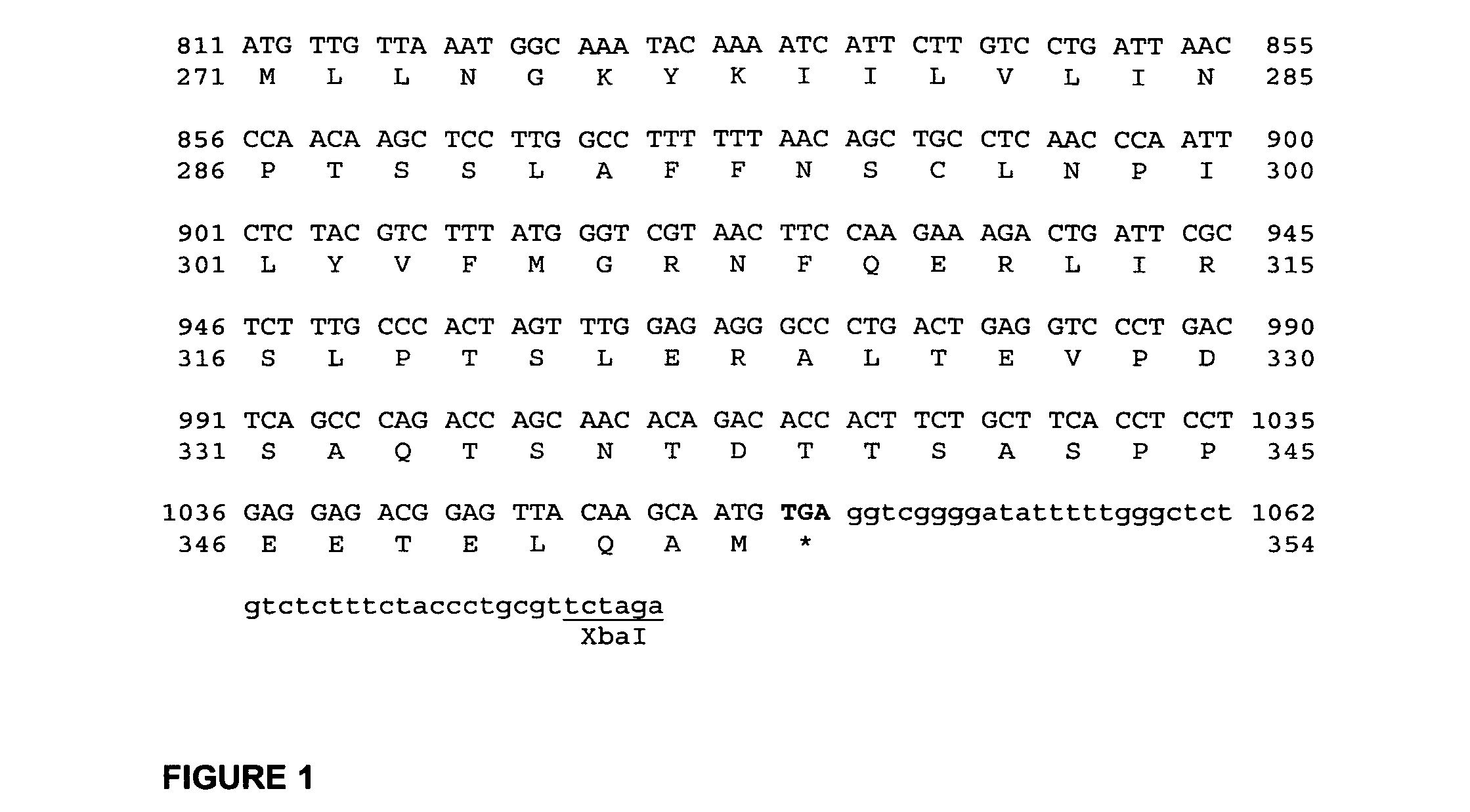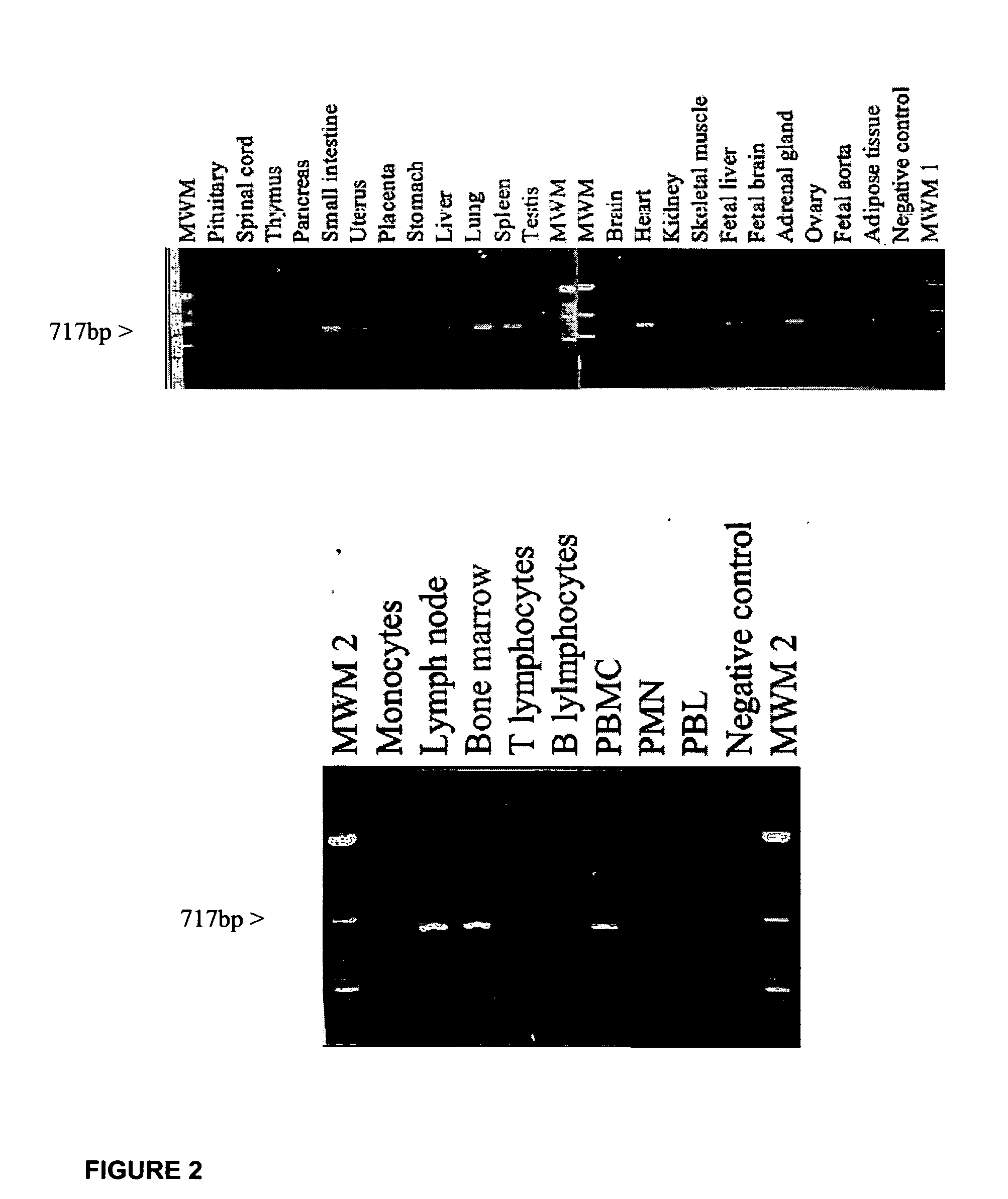Ligand for G-protein coupled receptor FPRL2 and uses thereof
a technology of g-protein coupled receptor and ligand, which is applied in the field of natural ligand for orphan g protein coupled receptor fprl2, can solve the problems of not knowing whether such concentrations of fmlf could be generated at sites, and achieve the effect of increasing or decreasing the signalling activity of the formyl peptide receptor
- Summary
- Abstract
- Description
- Claims
- Application Information
AI Technical Summary
Benefits of technology
Problems solved by technology
Method used
Image
Examples
example 1
Cloning of Human FPRL2 Receptor
[0410] Human FPRL2 was cloned as follows: Oligonucleotides were synthesized, corresponding to the sequence of FPRL2. Oligonucleotide AS-204 had the forward sequence: 5′-ACCGGAATTCACCATGGAAACCAACTTCTCC-3′ (SEQ ID NO: 14), and hybridized on the translation initiation codon of FPRL2. Oligonucleotide AS-416 had the sequence: 5′-ATCATCTAGAACGCAGGGTAGAAAGAGACAG-3′ (SEQ ID NO: 15), and was complementary to a sequence located downstream of the translation stop codon of FPRL2. A PCR was performed, using human genomic DNA as template, and using oligonucleotides AS-204 and AS-416 as primers, with the following conditions:
[0411] PCR enzyme: Pfu DNA Polymerase (Stratagene).
[0412] Buffer supplied by the Stratagene with the enzyme, and added with 2.5% (v / v) of DMSO Cycles were as follow:
Temperature (° C.)Time (min)1×945′3×941′481′722′30× 941′601′722′1×7210′
[0413] A PCR product of the expected size (1.1 kb) was obtained. This product was cloned in the EcoRI and ...
example 2
Tissue Distribution of FPRL2
[0414] Tissue distribution of human FPRL2-Reverse transcription-polymerase chain reaction (RT-PCR) experiments were carried out using a panel of poly(A)+RNA (spinal cord, thymus, pancreas, uterus, placenta, stomach, lung, spleen, testis, brain, heart, kidney, skeletal muscle, fetal liver, fetal brain, adrenal gland, bone marrow) and total RNA (pituitary, small intestine, liver, ovary, fetal aorta, adipose, monocytes, lymph node, T lymphocytes, B lymphocytes, PBMC, PMN, PBL). The FPRL2 primers were 5′-CGCACAGTCAACACCATCTG-3′ (forward) (SEQ ID NO: 16) and 5′-AGCTGTTAAAAAAGGCCAAG-3′ (reverse) (SEQ ID NO: 17), with an expected product size of 717 bp (FIG. 2). Approximately 50 ng of Poly(A)+RNA or 500 ng of total RNA was reverse transcribed with Superscript II (Invitrogen) and used for PCR. PCR was performed using the Taq polymerase under the following conditions: denaturation at 94° C. for 5 min, 30 cycles at 94° C. for 1 min, 56° C. for 1 min 30 s, and 72° ...
example 3
Purification of the Natural Ligand of FPRL2 and Identification of a Fragment of HBP
1. Homogenate
[0415] The purification was performed from 350 g of porcine spleen. The fresh organ was shopped and frozen in liquid nitrogen. Frozen organ was then brought to 4° C. in a solution of 20% acetonitrile (ACN) in water, in a ¼ organ / liquid proportion. The mixture was mixed, then reduced to an homogenate with an Ultraturax.
[0416] After homogeneization, the mixture was centrifuged at 10000 g for 30 minutes at 4° C.
[0417] The supernatant was frozen in liquid nitrogen and stored at −80 ° C.
2. First Step
[0418] Aliquots of 200 ml, corresponding to 50 g of organ, were diluted 4 times in water 0.1% trifluoroacetic acid (TFA) to reach a concentration of 5% ACN. 800 ml were then loaded on a Poros column 4.6×150 mm at 5 ml / min. The column was submitted to a gradient of ACN (supplemented with 0.1% TFA) from 5 to 70% at 6% / minute. Fractions of 1.25 ml were collected and tested for functional activ...
PUM
| Property | Measurement | Unit |
|---|---|---|
| pH | aaaaa | aaaaa |
| molecular mass | aaaaa | aaaaa |
| molecular mass | aaaaa | aaaaa |
Abstract
Description
Claims
Application Information
 Login to View More
Login to View More - R&D
- Intellectual Property
- Life Sciences
- Materials
- Tech Scout
- Unparalleled Data Quality
- Higher Quality Content
- 60% Fewer Hallucinations
Browse by: Latest US Patents, China's latest patents, Technical Efficacy Thesaurus, Application Domain, Technology Topic, Popular Technical Reports.
© 2025 PatSnap. All rights reserved.Legal|Privacy policy|Modern Slavery Act Transparency Statement|Sitemap|About US| Contact US: help@patsnap.com



